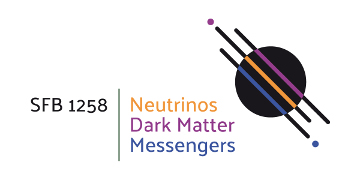ANET by Irene Tamborra
Irene Tamborra's ERC project aims at solving one of the most urgent riddles in modern particle astrophysics: how elementary particles, such as neutrinos, affect the physics of spectacular cosmic fireworks in the death of massive stars as core-collapse supernova explosions and in the merger of two neutron stars or a neutron star and a black hole.
Neutrinos are the main drivers in supernova explosions
Neutrinos are feebly interacting particles very copiously produced in these astrophysical sources. Because of the extremely complex conditions in the core of supernovae or compact binary mergers, our understanding of neutrino physics in the sources is quite preliminary. Yet, neutrinos are the main drivers behind supernova explosions and the synthesis of the elements heavier than iron, such as gold and platinum. This project promises to have profound implications on fundamental physics, the origin of the heavy elements, as well as our comprehension of the behavior of matter at extreme densities.
More information:
News of the University of Copenhagen's Niels Bohr Institute
RES-NOVA by Luca Pattavina
Astronomers have long been in pursuit of neutrinos, sometimes referred to as "ghost particles." Neutrinos can provide insights into astronomical events taking place deep in the heart of galaxies, for example supernovae. To detect these invisible and almost massless particles, huge detectors are operated, such as IceCube Neutrino Observatory in Antarctica with a volume of one cubic kilometer or the Super-Kamiokande detector in Japan with 50,000 tons of highly pure water.
The goal is to develop a signficantly smaller neutrino detector
In the RES-NOVA project, Dr. Luca Pattavina and his colleagues at the Gran Sasso Underground Laboratory (LNGS) in Italy are working on a new type of detector that is significantly smaller. The main component of the new detector material is archaeological lead operated as a low-temperature detector at milli-Kelvin temperatures. Due to its age of more than 2000 years, this lead has very low natural radioactivity and therefore produces hardly any disturbing background noise during the measurements. The goal of the project is to build a demonstrator that can be used to measure neutrinos produced by the next supernova.
The project is a collaboration between TUM and LNGS
Dr. Luca Pattavina is a scientist at Stefan Schönert's Chair of Experimental Astroparticle Physics at the Physics Department of the TUM School of Natural Sciences and a member of the ORIGINS Cluster as well as the SFB1258. He also works as a scientist at the Italian Laboratori Nazionali del Gran Sasso (LNGS). The project is a collaboration between TUM and LNGS, and the ERC grant was submitted by LNGS.
Contact
Dr. Luca Pattavina
TUM School of Natural Sciences
Physics Department
Chair of Experimental Astroparticle Physics
E-Mail: luca.pattavina@tum.de


